Understanding Take-Two Interactive’s Financial Landscape and Future Trajectory
Welcome, aspiring investors and traders, to a deep dive into the world of Take-Two Interactive Software Inc. (TTWO). The interactive entertainment industry is dynamic and complex, often presenting unique challenges and opportunities compared to traditional sectors. When we analyze a company like Take-Two, publisher of some of the world’s most iconic video game franchises, we need to go beyond the headlines and understand the underlying business drivers and financial metrics. This article will explore Take-Two’s recent financial performance, strategic moves, and the highly anticipated future that lies ahead, particularly regarding the impact of key game releases.
To provide a clearer view, here are three key aspects of Take-Two’s business performance:
- Strong revenue growth driven by major franchises.
- High engagement through recurrent consumer spending.
- Strategic acquisitions to enhance portfolio diversity.
Deconstructing Fiscal Year 2025 Performance: The Net Bookings Engine
Let’s begin by looking at Take-Two’s reported financial results for the fourth quarter and full Fiscal Year 2025, which concluded on May 15, 2025. For interactive entertainment companies, a key performance indicator you’ll frequently encounter is Net Bookings. Think of Net Bookings as the net amount of products and services sold digitally or sold-in physically during the period. It’s a measure closely watched because it reflects the immediate demand for their content, encompassing full games, add-on content, and microtransactions.
In Q4 Fiscal Year 2025, Take-Two reported Net Bookings of $1,346.7 million, representing a robust 17% increase year-over-year. This upward trend continued into the full Fiscal Year 2025, with total Net Bookings reaching $5,570.2 million, a solid 6% growth compared to the previous fiscal year. What does this tell us? It indicates consistent demand across their portfolio, driven by both new releases and the ongoing engagement with existing titles. Understanding Net Bookings is crucial because it often provides a clearer picture of sales momentum before the complexities of GAAP revenue recognition are applied.
Which specific titles and franchises powered this performance? The data highlights significant contributions from major players in their portfolio. Games like NBA 2K25 and NBA 2K24, the evergreen giants Grand Theft Auto Online and Grand Theft Auto V, and a strong performance from their Zynga mobile titles, including hits like Toon Blast, Match Factory!, and Empires & Puzzles, were central to achieving these results. This underscores the diversified nature of their revenue streams across console, PC, and mobile platforms, a critical strength in the modern gaming landscape.

The Power of Recurrent Consumer Spending
Within the financial results, one metric stands out as increasingly vital for companies like Take-Two: Recurrent Consumer Spending. This refers to consumer spending on virtual currency, add-on content, and in-game purchases, as opposed to the initial purchase of the base game. It represents the engagement and monetization of players *after* they’ve bought the game, often in live service titles.
Why is this important? Because it indicates the health and longevity of a game’s player base and provides a steady, often high-margin, revenue stream. For Take-Two, Recurrent Consumer Spending accounted for a remarkable 77% of total Net Bookings in Q4 FY2025 and an even higher 80% for the full Fiscal Year 2025. Looking at GAAP Net Revenue, the percentages were similarly high: 76% in Q4 FY2025 and 79% for the full year.
This high percentage tells us that a significant portion of Take-Two’s business is now built on engaging players over long periods with continuous updates, content, and monetization opportunities, particularly within titles like Grand Theft Auto Online, NBA 2K, and their Zynga mobile portfolio. This shift towards live services provides greater revenue predictability and potentially higher profitability margins compared to relying solely on blockbuster launch sales. For investors, understanding the growth and sustainability of this recurrent revenue is just as critical as anticipating new game releases.
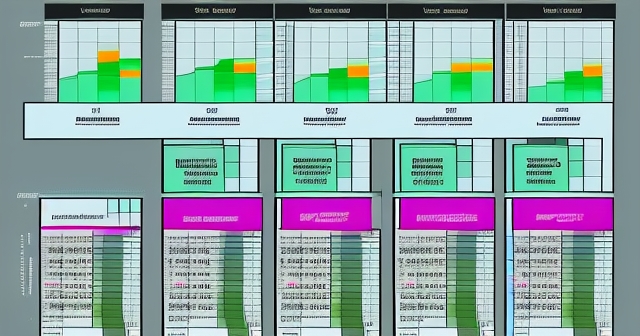
Navigating GAAP: Understanding Net Revenue and Net Loss
While Net Bookings gives us insight into sales momentum, the official financial health of a company is reported under Generally Accepted Accounting Principles (GAAP). For Fiscal Year 2025, Take-Two’s GAAP Net Revenue mirrored the Net Bookings growth, increasing by 5% to $5,306.7 million. However, the GAAP Net Loss for the full Fiscal Year 2025 was substantial, coming in at $4,491.3 million.
At first glance, a net loss of this magnitude can seem alarming, especially when Net Bookings and Net Revenue showed growth. This is where understanding the impact of specific accounting items becomes crucial. The significant net loss in FY2025 was heavily influenced by large impairment charges. Specifically, the company recorded charges of $922.6 million for goodwill and $3,638.6 million for acquired intangible assets.
What are impairment charges? Imagine you acquire another company or intellectual property (IP) with the expectation that it will generate a certain level of future value. If, later, the projected future value of those acquired assets (like goodwill or intangible assets such as acquired IP rights) is assessed to be less than the value recorded on your balance sheet, accounting rules require you to reduce their book value. This reduction is recognized as an impairment charge, which hits the income statement and can significantly impact net income (or loss) in that period, even if the core operations are performing reasonably well. For Take-Two, these charges likely relate to past acquisitions, including perhaps adjustments tied to Zynga or other deals, reflecting a reassessment of the carrying value of those assets. While these charges are non-cash and don’t affect immediate liquidity, they signal a reassessment of the long-term profitability or value derived from certain past investments.
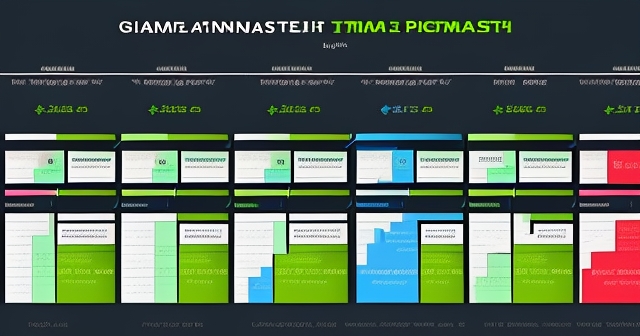
Looking Ahead: Fiscal Year 2026 Outlook
Companies provide financial guidance to give investors an idea of their expected performance in upcoming periods. For Fiscal Year 2026, Take-Two has provided an initial Net Bookings guidance range of $5.50 billion to $5.60 billion. How does this compare to FY2025? It’s relatively flat to a slight increase from the $5,570.2 million achieved in FY2025.
This outlook suggests that while Take-Two anticipates continued strong performance from its existing catalog and expected releases within FY2026, it does not project a massive surge in Net Bookings during this specific period. This is a key piece of information for investors, as it manages expectations for the immediate future. The stability indicated in the FY2026 guidance allows us to focus on the drivers expected within this period and also prepares us for the significant anticipated shift in the following fiscal year.
What might contribute to the FY2026 performance? We can expect continued strong engagement with live service titles, the release of new annual iterations of sports franchises like NBA 2K25 and WWE 2K25, and other announced titles slated for release during their Fiscal Year 2026 (which runs roughly from May 2025 to April 2026). Understanding this near-term outlook is essential for assessing the company’s valuation and growth prospects in the coming year, separate from the longer-term catalysts.
The Grand Catalyst: Anticipating Grand Theft Auto VI in FY2027
While Fiscal Year 2026 presents a picture of stability, the focus of many investors and fans alike is firmly fixed on Fiscal Year 2027. This is because Take-Two has reiterated its expectation for the release of one of the most anticipated entertainment products in history: Grand Theft Auto VI (GTA VI). The company has provided an initial outlook for Fiscal Year 2027, projecting record levels of Net Bookings.
Why is GTA VI such a significant catalyst? The Grand Theft Auto franchise is a cultural phenomenon. Its previous main installment, Grand Theft Auto V, released way back in 2013, has gone on to become the second best-selling video game of all time, generating billions in revenue over more than a decade, largely fueled by the incredible success of Grand Theft Auto Online. A new mainline entry into this series is expected to drive unprecedented sales and engagement, resetting performance benchmarks for the company and potentially the industry.
Take-Two’s projection of record Net Bookings for FY2027 is a clear signal that they expect GTA VI to significantly elevate their financial performance. This isn’t just about the initial game sales; it’s also about the potential for a massive, long-lasting live service component akin to GTA Online, which could contribute significant recurrent revenue for years to come. The release of GTA VI is expected to establish a new baseline for the business, fundamentally altering the scale of Take-Two’s operations and potentially leading to substantially enhanced profitability in subsequent years, assuming successful execution and ongoing player engagement.
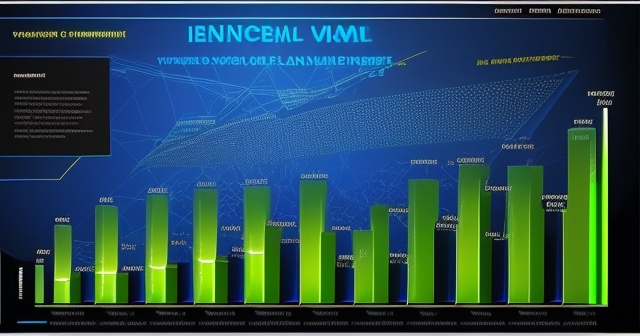
Building the Future: The Game Pipeline Beyond GTA VI
While GTA VI rightly captures much of the attention, it’s crucial to remember that Take-Two is a diverse publisher with multiple labels (Rockstar Games, 2K, Private Division, Zynga) and a deep pipeline of upcoming titles. Understanding this broader pipeline provides a more complete picture of the company’s future growth drivers beyond the single massive release in FY2027.
Several significant games have been announced and are expected in the near term, primarily within Calendar Year 2025 (which overlaps with Take-Two’s FY2025 and FY2026). These include:
- Sid Meier’s Civilization VII: The next installment in the beloved 4X strategy series, expected to launch in 2025.
- Borderlands 4: The continuation of the popular looter-shooter franchise, also expected in 2025. This title comes into the portfolio following the acquisition of Gearbox Entertainment.
- Mafia: The Old Country: A new prequel entry in the critically acclaimed crime drama series, announced and expected in 2025.
- Annual sports titles: NBA 2K25 and WWE 2K25, expected later in 2024 for their respective sports seasons.
Beyond these major titles, the pipeline includes a variety of games across different genres and platforms. Private Division, their indie publishing label, continues to release unique experiences like Tales of the Shire: A The Lord of the Rings Game, No Rest for the Wicked, and others. Zynga is consistently launching new mobile games and content updates, such as Game of Thrones: Legends and the anticipated worldwide launch of Star Wars: Hunters, alongside partnerships like the one for CSR Racing with Automobili Lamborghini S.p.A. This breadth of titles, spanning core gaming, sports simulation, strategy, and hyper-casual/mobile, helps diversify Take-Two’s risks and reach a wide audience.
This extensive pipeline ensures that even outside of the immense impact of GTA VI, Take-Two has a steady stream of content designed to engage different segments of the gaming market and contribute to ongoing Net Bookings and Recurrent Consumer Spending.
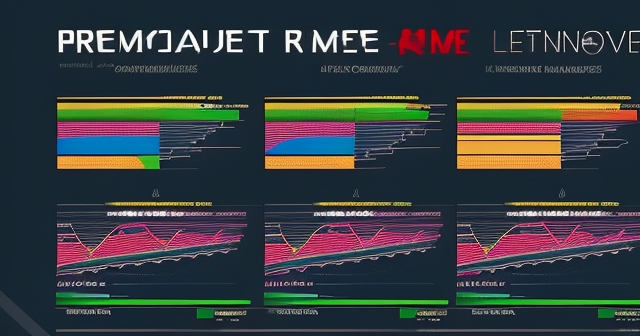
Strategic Corporate Actions: Acquisitions and Financing
Successful companies in the gaming industry often grow not just organically through game development but also strategically through acquisitions and careful financial management. Take-Two has been active on both fronts.
On the acquisition side, a notable recent move was the completion of the acquisition of The Gearbox Entertainment Company Inc. This brings the highly successful Borderlands franchise, among others, fully under the Take-Two umbrella, further strengthening their portfolio of valuable Intellectual Property (IP). Another upcoming acquisition mentioned is Video Games Deluxe, a long-time partner studio that has worked on titles like L.A. Noire and the upcoming Mafia: The Old Country, bringing their expertise fully in-house.
From a corporate finance perspective, Take-Two has also been managing its capital structure. Recently, the company announced the pricing of two offerings of Senior Notes: a $600 million offering and a $350 million add-on offering to an existing series. Issuing senior notes is a way for a company to borrow money from investors, essentially taking on debt. This capital can be used for various purposes, such as funding acquisitions, investing in game development, or managing working capital. The terms of senior notes (like interest rate and maturity date) reflect the company’s creditworthiness and market conditions. These moves indicate Take-Two is utilizing debt financing to support its strategic initiatives and operations.
Additionally, a secondary offering of 2.83 million shares of common stock by Embracer Group AB was priced at $154.50 per share. A secondary offering is when existing shareholders sell their shares; the company itself does not receive proceeds. This specific offering indicates that Embracer Group AB, which had previously acquired Gearbox, is divesting its shares in Take-Two. For investors, this provides insight into the actions of major shareholders and can sometimes impact market supply and demand for the stock.
Key Franchises and Their Enduring Value
Much of Take-Two’s success and future potential are tied to the strength of its core franchises. These are not just individual games but entire ecosystems and communities built over years, sometimes decades. Let’s briefly revisit some of the heavy hitters:
- Grand Theft Auto (GTA): As discussed, GTA is a cornerstone. Grand Theft Auto Online’s continued monetization power years after launch is a testament to the live service model done right. The sheer anticipation for GTA VI highlights the enduring cultural relevance of the series.
- NBA 2K: This is the dominant franchise in basketball simulation. Its annual release cycle, combined with strong online modes and monetization within NBA 2K, provides a consistent and predictable revenue stream. It’s a prime example of how live services can drive significant recurrent spending within a sports game context.
- Civilization: Sid Meier’s creation is a legendary strategy series with a dedicated fanbase. The announcement of Civilization VII signals continued investment in this historically strong PC and console franchise, known for deep gameplay and replayability.
- Red Dead Redemption: While not generating the same level of recurrent spending as GTA Online, Red Dead Redemption 2 and Red Dead Online remain incredibly popular and contribute significantly to Take-Two’s catalog sales and engagement.
- Zynga Mobile Portfolio: This is where Take-Two’s mobile strength primarily resides. Titles like Toon Blast, Match Factory!, and Empires & Puzzles consistently rank among top-grossing mobile games. The mobile gaming market is vast and offers different monetization models (often free-to-play with in-app purchases and ads), providing a crucial revenue stream distinct from the core console/PC business. New mobile initiatives like Game of Thrones: Legends and Star Wars: Hunters show their commitment to expanding their mobile IP footprint.
These key franchises, alongside others acquired or developed internally, form the backbone of Take-Two’s Intellectual Property library. The value isn’t just in the initial game sale, but in the ability to cultivate player communities, release engaging post-launch content, and build long-term relationships with consumers through these established worlds and experiences.
| Franchise | Key Features | Revenue Contribution |
|---|---|---|
| Grand Theft Auto | Cultural phenomenon, online service | High recurrent spending |
| NBA 2K | Annual releases, strong online modes | Predictable revenue stream |
| Civilization | Deep gameplay, dedicated fanbase | Consistent sales |
Investor Relations and Market Perception
For publicly traded companies like TTWO on the NASDAQ, managing investor relations is key. This involves regular communication through earnings calls, participation in industry conferences (like the TD Cowen conference mentioned in the data), and hosting annual meetings of stockholders. These activities provide platforms for management (like CEO Strauss Zelnick and President Karl Slatoff) to share financial results, discuss strategy, and answer questions from analysts and investors.
Market perception of Take-Two is heavily influenced by its performance metrics, its pipeline announcements, and arguably, most significantly, the status of Grand Theft Auto VI’s development and release window. As we’ve seen, the anticipation around GTA VI has a palpable impact on expectations for FY2027. Analysts and investors closely scrutinize metrics like Net Bookings and Recurrent Consumer Spending to gauge the underlying health of the business, while also paying attention to GAAP results and the impact of one-time items like impairment charges.
Understanding the flow of information from the company and how the market interprets it is a crucial part of investing in dynamic sectors like gaming. Keep an eye on earnings call transcripts and investor day presentations for deeper insights directly from the company’s leadership regarding their strategy and outlook.
Potential Risks and Opportunities
Investing in the gaming industry, while potentially rewarding, is not without its risks. For Take-Two, some potential risks include:
- Development Delays: Major titles like GTA VI are incredibly complex to develop. Any significant delays could impact the projected FY2027 record Net Bookings.
- Game Performance: Not every game is a guaranteed hit. While core franchises are strong, new IP or sequels that underperform can negatively affect results.
- Competition: The gaming market is highly competitive, with numerous large publishers (like Sony, Microsoft, Nintendo, Electronic Arts, Activision Blizzard) and countless smaller developers vying for consumer attention and spending.
- Changing Consumer Trends: Player preferences can shift rapidly, impacting demand for certain genres or monetization models.
- Regulatory Environment: The industry faces increasing scrutiny regarding issues like loot boxes, microtransactions, and data privacy, which could lead to regulatory changes.
- Integration Risk: Successfully integrating acquired companies, like Gearbox, can be challenging.
Conversely, the opportunities for Take-Two are also significant:
- Successful GTA VI Launch: A smooth and massively successful launch of GTA VI and its online component could drive unprecedented financial results and establish a new era for the company.
- Growth in Live Services: Continued growth in recurrent consumer spending across their portfolio, fueled by engaging content updates, represents a high-margin opportunity.
- Mobile Expansion: Leveraging popular IP and developing new hits in the massive mobile market can unlock significant revenue growth.
- Acquisition Synergies: Successfully integrating acquired studios and IPs can lead to operational efficiencies and new game development opportunities.
- Expansion into New Platforms/Technologies: Opportunities exist in cloud gaming, VR/AR, and potential new distribution models.
As investors, we must weigh these potential upside opportunities against the inherent risks in the business and the broader economic environment. The outlook for FY2027 is incredibly promising, but it is based on the successful execution of a very large and complex project.
Analyzing Valuation and Financial Health
Beyond the operational performance, we must also consider Take-Two’s financial structure and how the market values it. While the provided data didn’t include detailed Non-GAAP metrics or comprehensive balance sheet figures like Market Cap, Shares Out, P/E ratios, or metrics like Debt To Equity, the information about Senior Notes offerings tells us the company is comfortable using debt as part of its capital structure. Understanding these financial health indicators – liquidity, leverage, profitability margins (Gross Margin, Net Margin, EBITDA) – is crucial for a complete investment analysis.
The substantial GAAP Net Loss in FY2025, driven by impairment charges, needs to be understood in context. While it impacts profitability for that specific year, it’s largely a non-cash accounting adjustment. Future GAAP profitability will depend on controlling operating expenses, the success of new releases, and managing ongoing costs, especially post-acquisition integration costs.
Valuation for gaming companies can be tricky, often factoring in the potential value of upcoming releases (the pipeline) and the long-term revenue streams from live services. The high anticipation and potential for GTA VI in FY2027 likely play a significant role in the market’s current valuation of TTWO, potentially leading to a higher P/E ratio based on current earnings if investors are pricing in future growth. Examining metrics like price-to-sales or enterprise value-to-EBITDA might also offer useful perspectives, especially when comparing to peers in the Gaming Industry.
Conclusion: Positioning for a Transformative Future
Take-Two Interactive Software Inc. navigated Fiscal Year 2025 with solid growth in Net Bookings, heavily reliant on the enduring strength of its established franchises and the significant, growing contribution from Recurrent Consumer Spending. While the headline GAAP Net Loss was substantial due to significant impairment charges, it’s important to understand the non-cash nature of these items and focus on the underlying operational trends.
The company’s guidance for Fiscal Year 2026 indicates a period of stability, setting the stage for the anticipated transformative event in Fiscal Year 2027. The expectation of record Net Bookings driven by the release of Grand Theft Auto VI positions FY2027 as a potential inflection point, establishing a new baseline for Take-Two’s financial performance.
Simultaneously, Take-Two is strengthening its position through strategic acquisitions like Gearbox Entertainment, expanding its diverse pipeline with titles across different genres and platforms, and managing its capital structure through debt financing. For investors and traders, analyzing TTWO requires a blend of understanding core financial metrics like Net Bookings and Recurrent Consumer Spending, appreciating the value and future potential of key Intellectual Property like Grand Theft Auto, and assessing the impact of strategic corporate actions. The road ahead for Take-Two appears significantly weighted towards the success of GTA VI, but their broader portfolio and ongoing live services will remain crucial components of their long-term value proposition.
take-two interactive software incFAQ
Q:What is the main source of revenue for Take-Two Interactive?
A:The main source of revenue for Take-Two Interactive comes from its game titles, particularly from recurrent consumer spending on in-game purchases.
Q:How has Take-Two’s performance been in recent fiscal years?
A:Take-Two has shown solid growth in Net Bookings, with substantial contributions from major franchises like Grand Theft Auto and NBA 2K.
Q:What expectations exist for the release of Grand Theft Auto VI?
A:There are high expectations for Grand Theft Auto VI, with projections indicating it could drive record levels of Net Bookings for Take-Two.
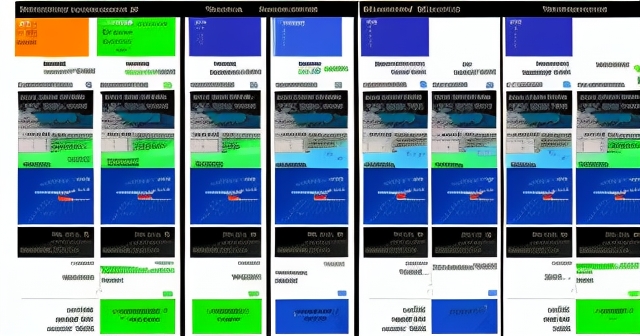
留言